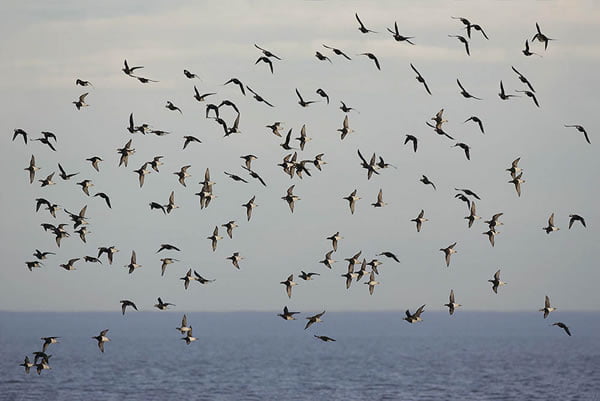Lead Institution(s): Long Point Waterfowl and Wetlands Research Fund
Project Lead: Scott Petrie
Collaborator(s): Shannon Badzinski (LPWWRF), Ken Ross (CWS), Norm North (CWS)
Focal Species: All Sea Ducks, Bufflehead (Bucephala albeola), Barrow’s Goldeneye (Bucephala islandica), Common Goldeneye (Bucephala clangula), Harlequin Duck (Histrionicus histrionicus), Long-tailed Duck (Clangula hyemalis), Common Eider (Somateria mollissima), King Eider (Somateria spectabilis), Spectacled Eider (Somateria fischeri), Steller’s Eider (Polysticta stelleri), Common Merganser (Mergus merganser), Hooded Merganser (Lophodytes cucullatus), Red-breasted Merganser (Mergus serrator), Black Scoter (Melanitta americana), Surf Scoter (Melanitta perspicillata), White-winged Scoter (Melanitta delgandi)
Project Description: An increase in winter sea duck use in the lower Great Lakes due to increase non-native prey resources resulted in the initiation of the Lower Great Lakes (LGL) January Survey in 2002. The LGL January Survey is an annual coordinated Canadian and US aerial waterfowl survey of lakes Ontario, Erie, and St. Clair. The survey is flown in early-mid January (similar time to the Mid-winter Survey at traditional wintering areas) to estimate numbers of wintering waterfowl along shorelines of the Canadian and US sides of the LGL. The LGL January Survey provides data on several diving duck and sea duck species, most notably Long-tailed Ducks (LTDU). For example, an average of 50,214 LTDU were counted each January during the LGL January Survey, and > 90% of those birds were located on the Canadian side of Lake Ontario. The LGL January Survey currently only is flown along shoreline habitat and detects waterfowl that are up to 1 km off shore but sea ducks often forage far offshore because of their deep diving abilities. Thus, the LGL January Survey may only record a very small portion of LTDU and scoter spp actually present given that many others may be as far as 10 km off shore. The objective of this project was to determine if adding several offshore survey transects to the LGL January Survey increase survey effectiveness for sea ducks, mainly Long-tailed Ducks and scoters.

